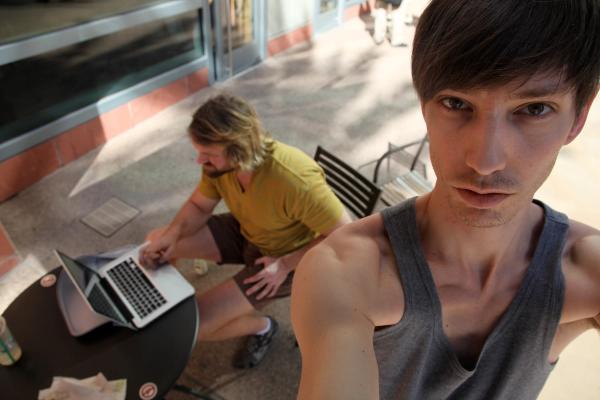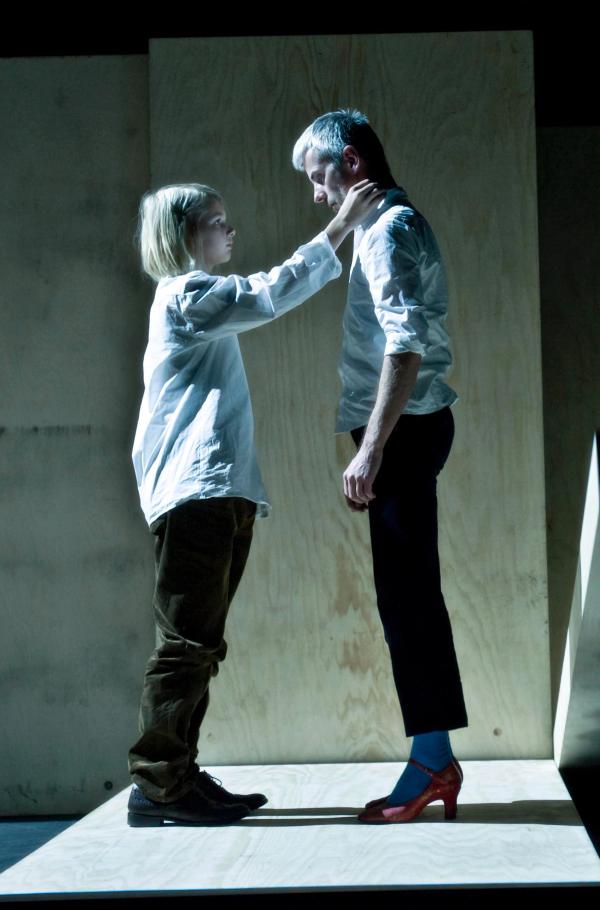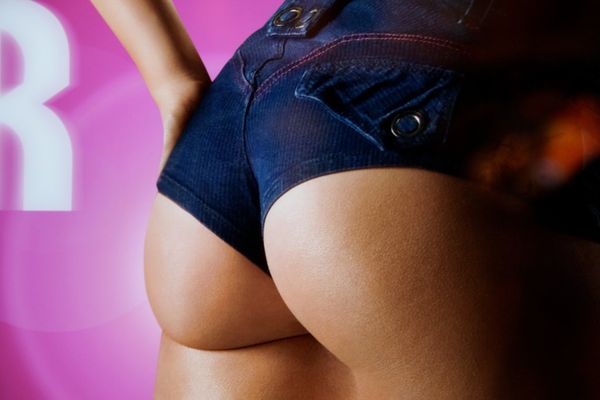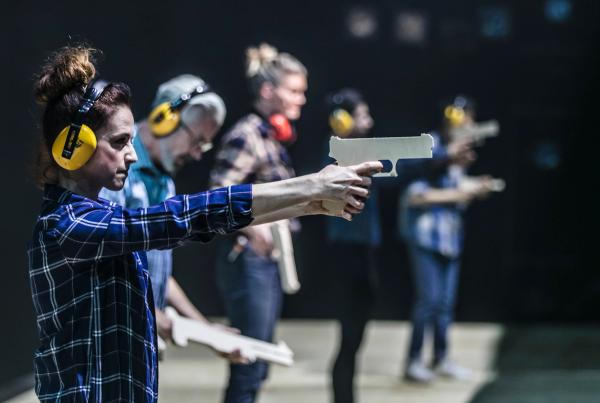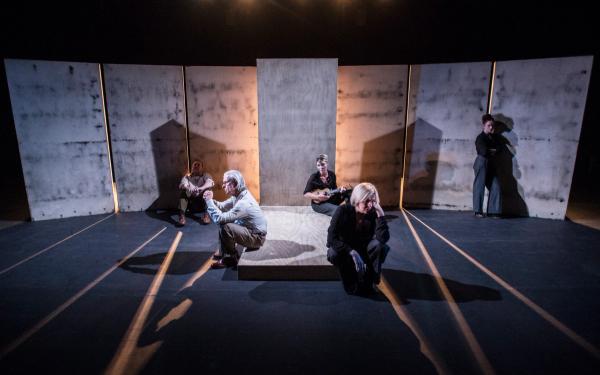When winter guests first embarked on what would become The America Trilogy, the impulse was at once audacious and unlikely. In the mid-2000s, with George W. Bush leaving office and the world seemingly united in “loving to hate America,” Alan Lucien Øyen submitted a proposal entitled Potential Lost in the Wasteland of Opportunity. What began as a provocative application for a “pro-America” piece grew into something far more expansive: a trilogy of post-dramatic theatre works created between 2009 and 2017.
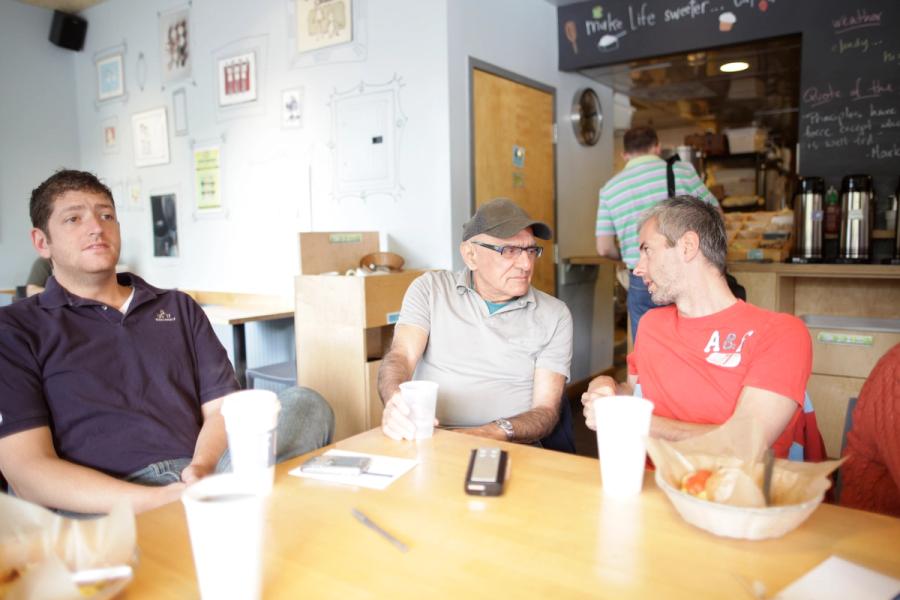
Searching for America – A Cinematic Vision
The genesis of the trilogy was rooted in a road trip across the United States. With philosopher Jean Baudrillard’s America in hand, Øyen set out together with set designer Åsmund Færavaag and collaborator Andrew Wale, following one concrete lead: a lawyer in Boston who invited them to join his circle of friends at a bakery in the South End. Arriving by Lucky Star bus from New York at dawn, they found a cross-section of strangers whose daily ritual was sharing coffee and conversation before going to work. Øyen, despite his own shyness, asked to record. That recording became the backbone of America – Visions of Love.
At its centre was George – a homosexual second-generation Syrian immigrant, cinephile, and singular voice. Arrested in the 1950s for hosting a “wild party,” George was told by his devout Muslim father: next time you find someone you love, bring him home. It was a startling gesture of acceptance in mid-century America, and George’s story became emblematic of the “other America” winter guests wanted to reveal.

The staging reflected another layer of meta-theatre: America as cinema. The script was structured like a screenplay, complete with sluglines read aloud as scene headings. On Åsmund Færavaag’s semi-abstract L-shaped set – a design inspired by the moving walls of a film studio – reality and fiction intermingled. The play unfolded as both the story of George and the story of Øyen and Wale searching for George. This layering of testimony and authorship would become a signature of Øyen’s later work, embedding the writer’s perspective within the material itself. Visions of Love combined raw sincerity with structural invention, questioning stereotypes while celebrating unexpected voices. Notably, this was the point where winter guests shifted from being known primarily as a dance company to a devised theatre ensemble. While the work was almost entirely text-driven, Øyen’s background in dance lent the staging a precise, choreographed physicality in how scenes flowed and sets moved.

Nightfall in America: The Great American Novel
Seven years later, Øyen and Wale continued their exploration during a six-week residency at Robert Wilson’s Watermill Center. This time they were interested not in travelogue but in fiction, grandeur, and the myth of the Great American Novel. America Ep. 2 – Psychopatriot emerged as a staged reading of their own exploration of “the Great American Novel,” interwoven with fragments of testimony and reflection.

The atmosphere was darker this time. The piece was conceived entirely at dusk, a slow descent into night, echoing the gathering clouds over American politics. Its premiere in Oslo in November 2016, just one week after Donald Trump’s election, felt uncanny in timing. Critics noted how its stripped-back expression offered audiences an almost “therapeutic way to process the shock of the contribution to processing the [then] recently held presidential election.” Psychopatriot interrogated how Americans construct their own national narrative – “puzzling together a new narrative from the subjective truths of real Americans… and the company’s own delusions.” Performed on a minimal set – a return to the iconic L-shaped structure – the work was intimate yet unsettling, probing how national identity is assembled from both personal truth and collective delusion. The work was both intimate and intellectually bracing. It explored the slippery boundary between reality and myth in American life, foreshadowing the era of “fake news” and alternative facts.
A therapeutic way to process the shock of the recently held presidential election.
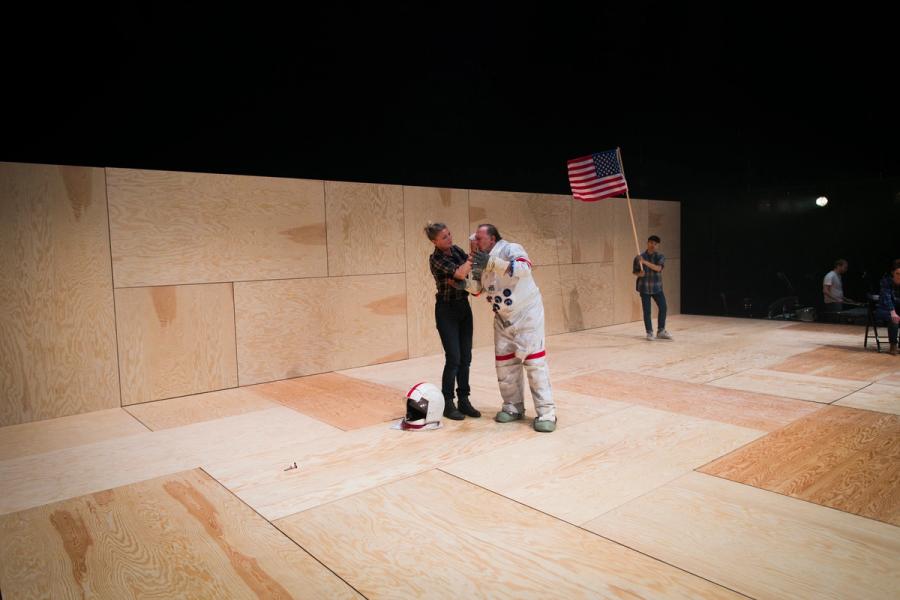
Deconstructing the Stage – American Mythology
The trilogy’s conclusion expanded in scale and ambition. For America Ep. 3 – SuperAmateur, Dansens Hus was dismantled and rebuilt into a massive stage landscape – a wooden L stretching the full width of the theatre. Sliding panels, trapdoors, live projections, and an on-stage band transformed the auditorium into a living cinematic frieze.
If the first two parts were relatively spare in staging, the third was an explosion of theatrical invention. Dansens Hus’ main stage was barely recognizable – rebuilt into a versatile landscape that embodied the production’s theme of America as performance. SuperAmateur cast an eye on the “theatricality” of American public life, blowing it up to almost cinematic scale.

With SuperAmateur, winter guests opened the canvas wide, tracing collective references that had shaped American culture from the 1950s to the present. Scenes shifted between personal testimonies and iconic images: the Kennedy assassination, Hurricane Katrina, the moon landing, even the private collapse of astronaut Buzz Aldrin told through the story of his parents. If the first installment was intimate and the second literary, the third was epic – a reflection on America itself as performance. The title hinted at the paradox: a superpower built by “amateurs,” ordinary individuals chasing extraordinary ideals. With the original cast returning, the ensemble brought years of lived experience into the work, underscoring the trilogy’s organic evolution. By the time of SuperAmateur, the performers had spent nearly a decade “living” in the world of these pieces, and that depth was visible in the nuance of their performances.

Seen together, AMERICA - Visions of Love, Psychopatriot, and SuperAmateur map an evolving encounter with America. From the hopeful discovery of unexpected love and laughter in ordinary Americans, to the dark comedy of a nation questioning its own narrative, to an epic portrait of a country’s sprawling identity, the trilogy spans a transformative era. What unites these works is Øyen’s pursuit of a “sincere and human expression.” By allowing real voices to intersect with theatrical invention, winter guests crafted a portrait of America that is at once affectionate and critical, ironic and tender. Beyond clichés and headlines, The America Trilogy reveals a country through the eyes of its people – flawed, fascinating, and endlessly complex.
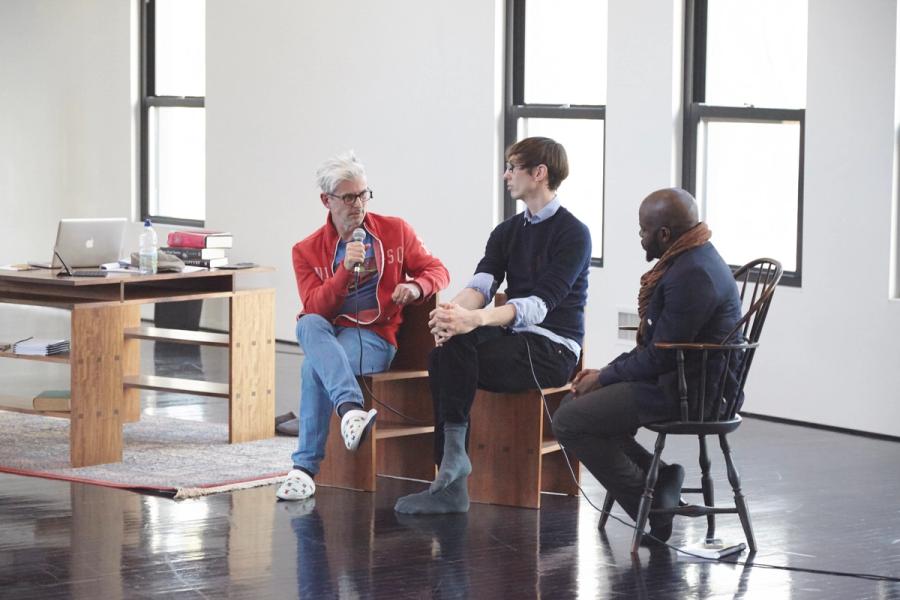
The trilogy’s singular language was forged not only through its subject matter but also through its process. Developed in part through residencies at Robert Wilson’s Watermill Center and New York Theatre Workshop, the works drew on an intercultural dialogue that sharpened their perspective. The continuity of collaborators – Andrew Wale, Kate Pendry, Suzie Davies, Yvonne Øyen, Huy Le Vo, and Anton Skrypziel – gave the trilogy an organic coherence. What emerged was a theatrical idiom that blurred documentary and fiction, stage and cinema, personal testimony and collective myth, ensuring that The America Trilogy resonates as both intimate encounter and sweeping cultural portrait.
The trailer for AMERICA – Visions of Love when it first opened at Dansens Hus, October 21st, 2009.
Did you know?
In AMERICA - Visions of Love, George’s candid story about a sexual encounter at a rest stop was eventually reassigned as a monologue for Alan’s 11-year-old nephew, Leander – a choice that radically shifted its tone and impact.
The original L-shaped walls were intended to be painted pure white, but when the team saw the delicate tree drawings sketched on the wood, they decided to leave them visible.
Andrew Wale had met Alan only twice before being invited onto the U.S. road trip. Originally a director, he joined as an actor – beginning a collaboration that has now lasted more than 15 years.
Psychopatriot ended with the raw immediacy of an email sent from a friend at Hillary Clinton’s election-night wake – a first-hand account of watching hope collapse in real time. In
In SuperAmateur, diary entries by the same friend – a sign-language interpreter – became a through-line, exposing the underbelly of American life and the systemic divide between rich and poor.

AMERICA - Visions of Love
A courtroom of contradictions — this verbatim-based two-act play unpacks obsession, projection, and the illusions of a nation seen from the outside.
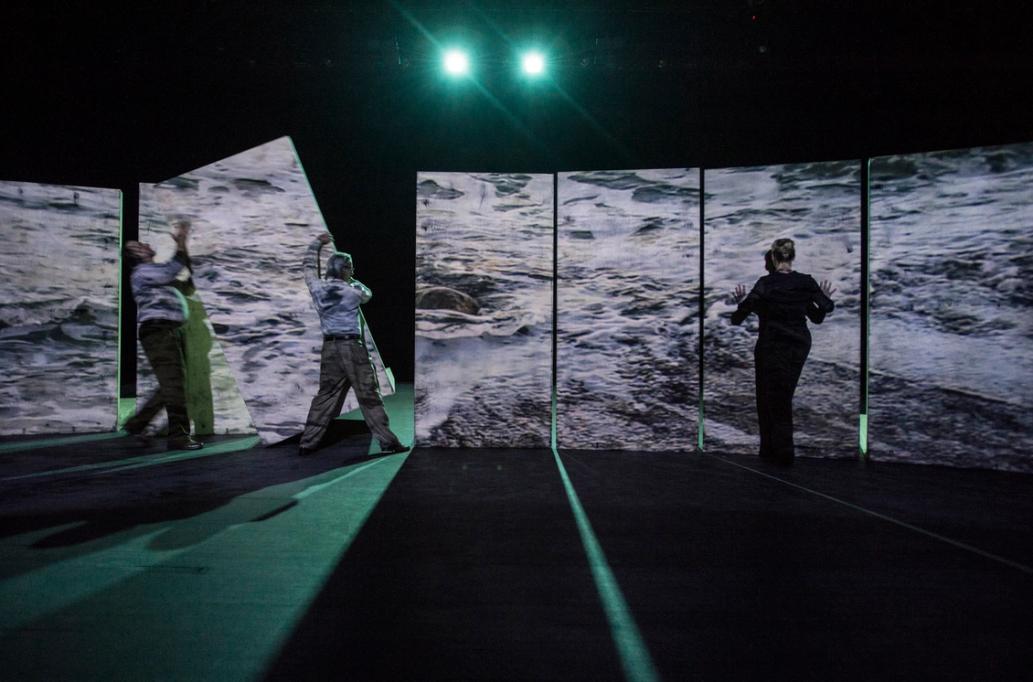
Psychopatriot
A theatrical collage of testimony, fiction, and myth — America ep2 - Psychopatriot unravels how fear and desire shape the stories a nation tells about itself.

SuperAmateur
A blown-up theatrical screen of American identity, truth, and spectacle — a two-act odyssey based on real encounters and invented fictions.
Images
